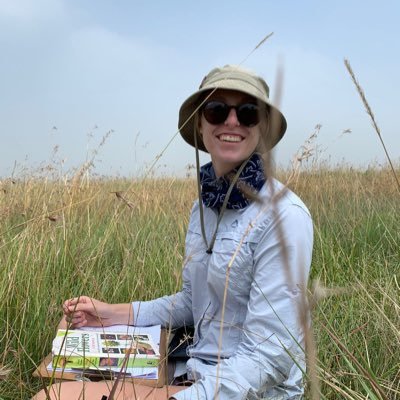Nature conservation has always been Annerine Myburgh’s passion from a young age. And when she recently scooped a prestigious award for the ‘Best Presentation by a Young Scientist’ at the Grassland Society of Southern Africa’s 56th congress, it was a fulfilment of her long cherished childhood dream.
Grasslands are vital element of the ecosystem and have a variety of uses ranging from being a key source of livestock feed, pasture and of livelihoods for stock farmers and herder, important catchment areas to being rich water resource. In addition, grasslands are major reserves of biodiversity and provide wildlife habitat.

Biodiversity worth preserving
Miss Myburgh is currently an MSc plant science student at the University of Pretoria (UP). She won the award for her research which aims to understand patterns and drivers of bio-diversity in the under-sampled and threatened grasslands of South Africa. Says Miss Myburgh: “Nature conservation has been my passion from a very young age. My life goal has always been to impact conservation efforts in South Africa, as we are truly fortunate to live in a country with incredible diversity that is worth preserving.”
Grassland conservation
She says she feels honoured because it is the first formal recognition that she received in pursuit of her dream. “Furthermore, the publicity this award brings will hopefully further the case for grassland conservation in our country,” said an elated Myburgh after winning the award. Diversity in grassland systems has historically been significantly undervalued and understudied, explains Myburgh. She says that there is also the Eurocentric notion that forest systems are the only climax vegetation communities with open vegetation systems (like grasslands and savannas) owing their existence to forest degradation by humans.
Grassland biome
“Yet, natural grasslands are ancient and boast exceptional floristic diversity. In South Africa, the grassland biome is the most transformed and least protected biome. Mining, agriculture and afforestation having permanently altered enormous swathes of grassland regions, which results in a gross loss of floristic diversity,” further explains Myburgh.
Different grasslands
She says the results from her research project confirm that grassland systems are incredibly rich, not only on a species level but also on genus and family level. Myburgh says: “This indicates that multiple species belong to many genera and families, even in a fairly small grassland area. We also found that different grasslands sites had very different species assemblages, even when they were fairly short distances apart. This shows that neighbouring grassland areas often house very different suites of species; in other words, each grassland site harbours some or several species that are not found elsewhere.”
Diversity patterns
As a result the transformation of even comparatively small grassland areas will potentially lead to a significant loss of species diversity in grasslands, adds Myburgh. Concludes Myburgh: “Therefore, it is necessary to conserve many larger sites across the grassland biome to conserve grassland species effectively. Implementing this new knowledge about diversity patterns in grassland systems will help to conserve this very unique and special biome effectively.”







